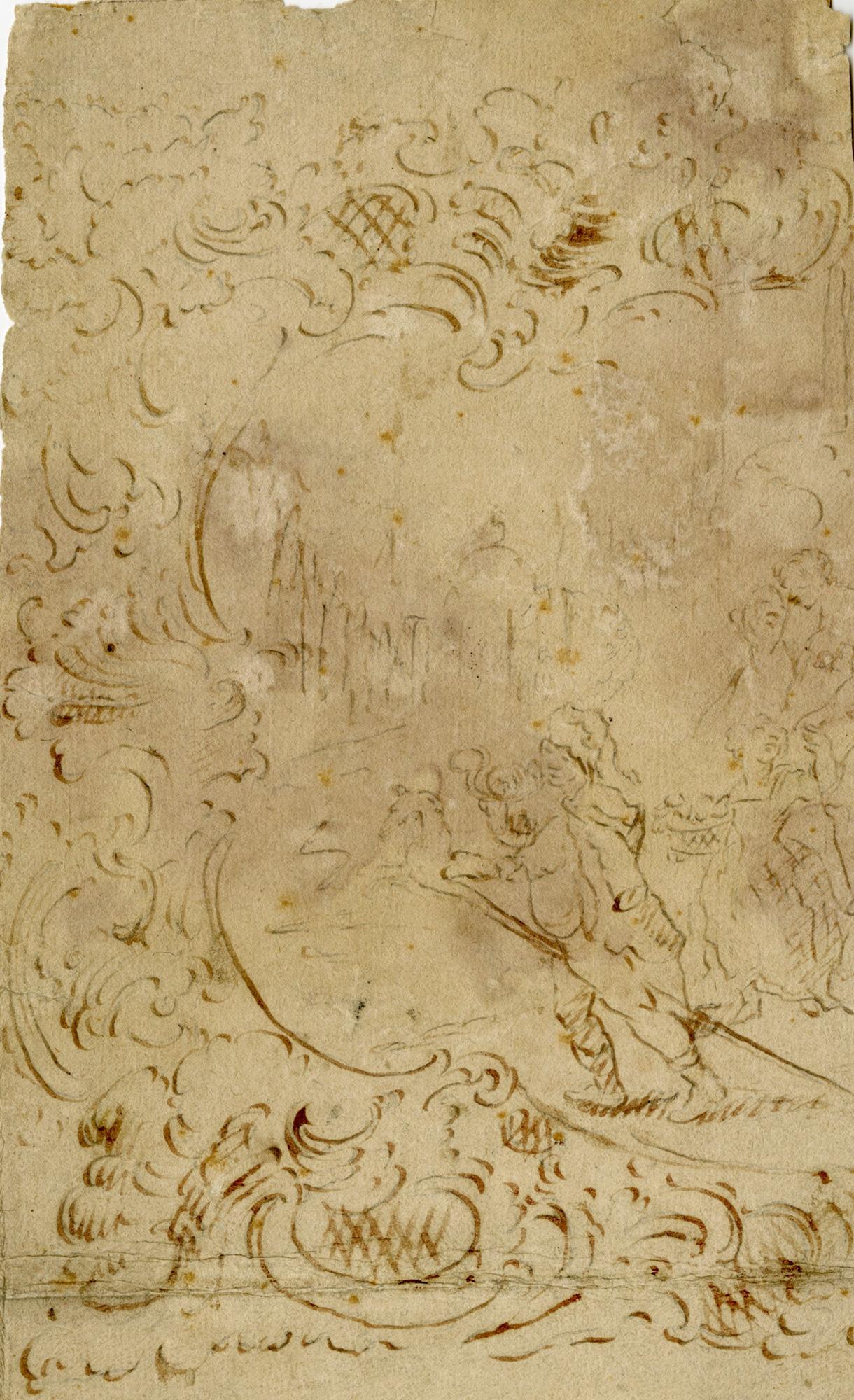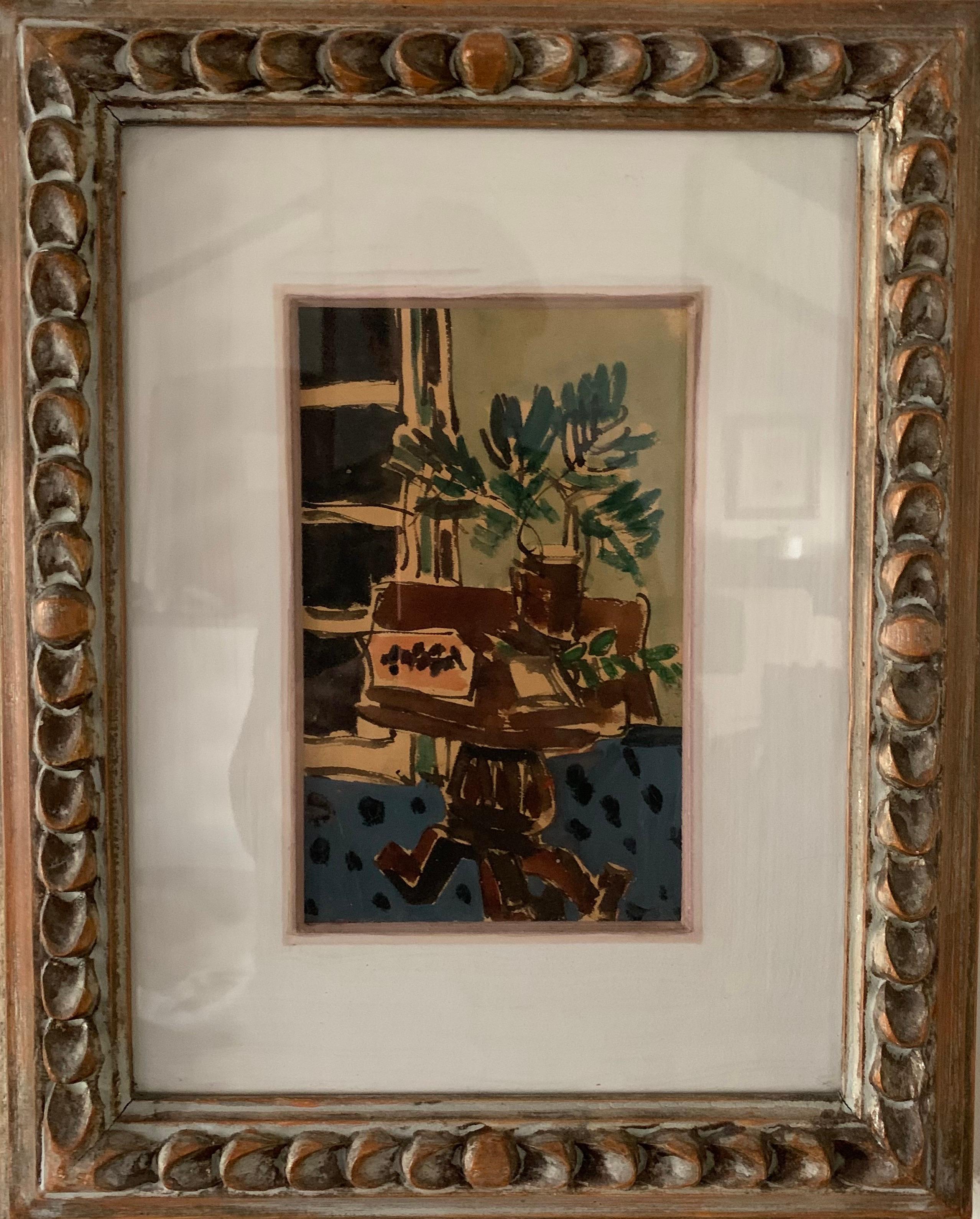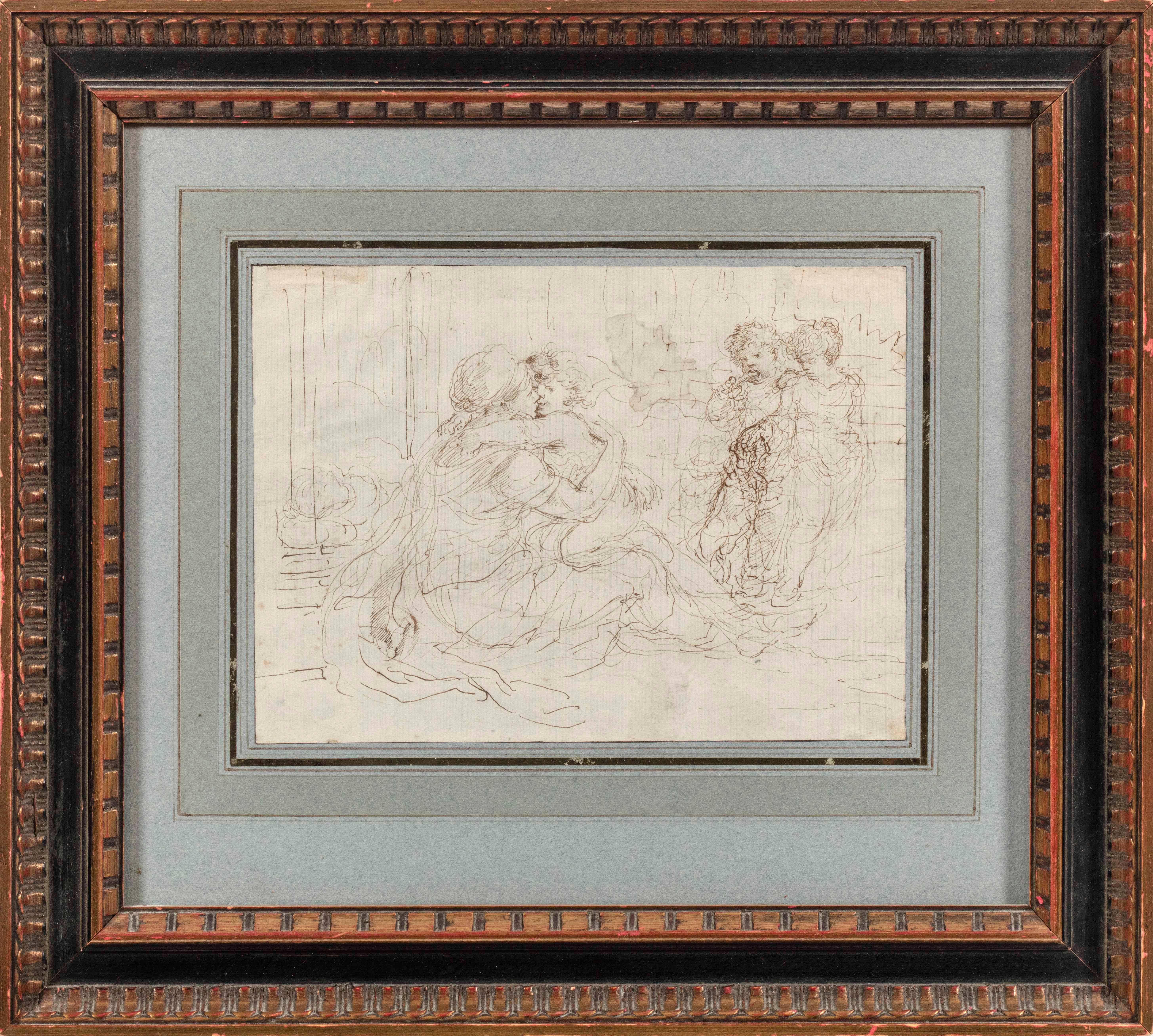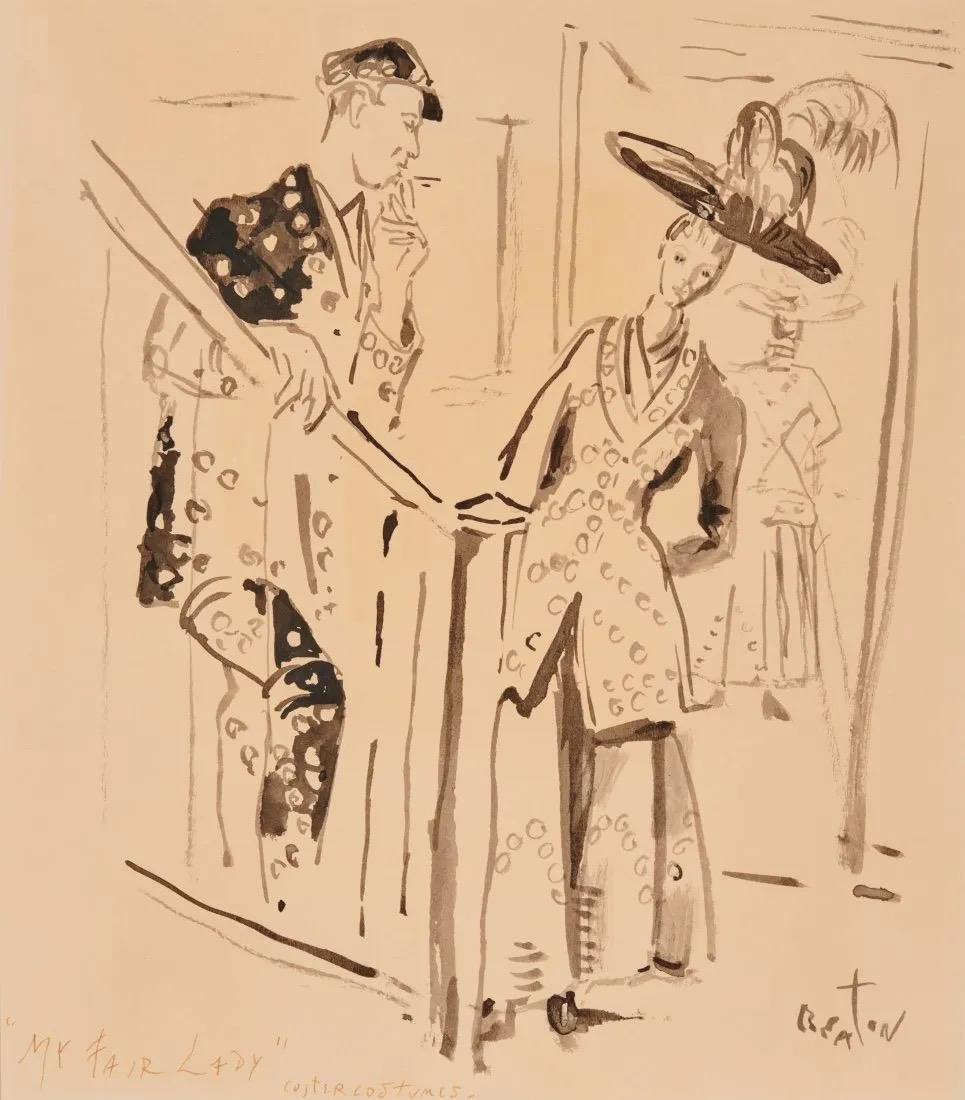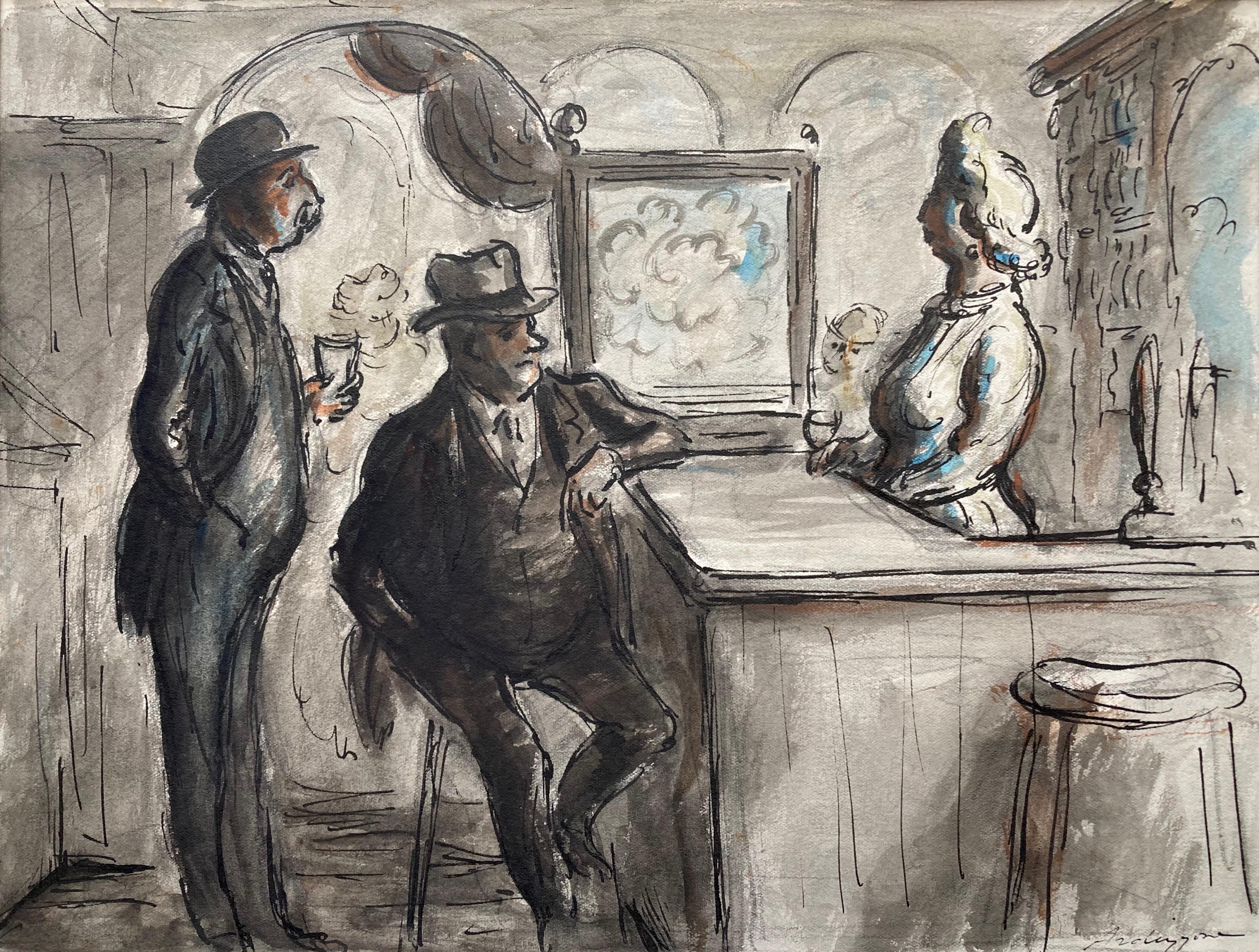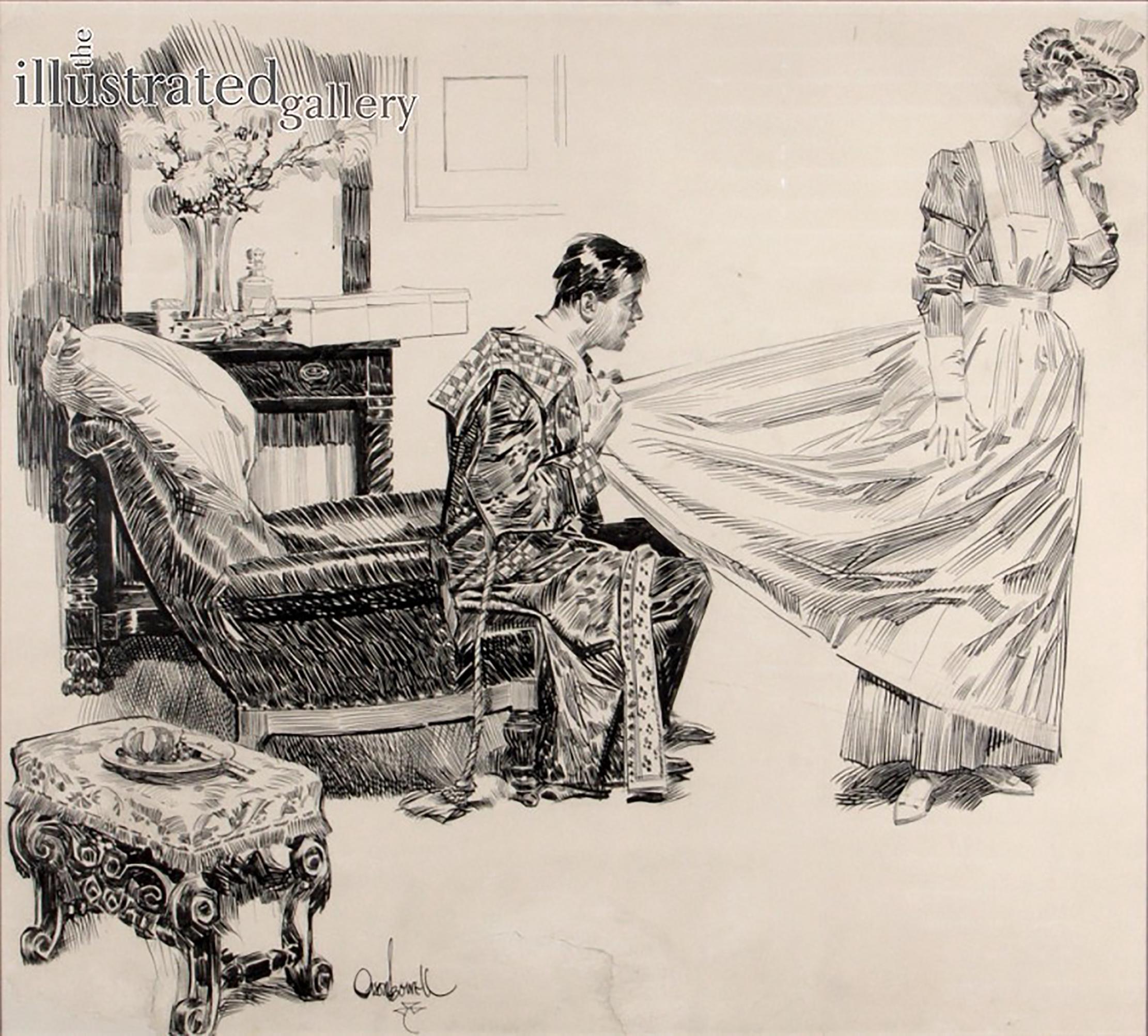Items Similar to Convent interior
Want more images or videos?
Request additional images or videos from the seller
1 of 4
Hippolyte Victor Valentin SEBRONConvent interior1839
1839
About the Item
Hippolyte Victor Valentin SEBRON
(Caudebec-en-Caux, 1801 – Paris, 1879)
Convent interior
Ink, pen and wash
Signed and dated lower left
27,5 x 20 cm
1839
Pupil of Daguerre from the age of 29, Sebron entered the Ecole des Beaux-Arts in Paris under the teaching of Cogniet. He exhibited regularly at the Paris Salon between 1831 and 1878.
First employed in the painting of dioramas, he then produced numerous paintings, particularly interiors of churches and ruins.
Like Daguerre, Bouton or Granet, Sebron paints detailed views with contrasting light effects.
Sebron is a traveling artist and he will bring back many views from his multiple journeys in Europe as well as around the Mediterranean and in the United States where he stayed from 1849 to 1855.
Around 1838 he went to the Spanish Basque Country to work. Four of his works are reproduced to illustrate the picturesque voyage to Spain, Portugal and the African coast of Baron Taylor. It is very likely that our drawing dated 1839 represents a convent sketched by Sebron during this trip.
Museums: Arras, Brussels, Le Havre, Paris (Mus. Louvre and Carnavalet), Poitiers, Rouen, Saint-Etienne, Troyes, Toronto, Eu…
- Creator:Hippolyte Victor Valentin SEBRON (1801 - 1879, French)
- Creation Year:1839
- Dimensions:Height: 11.03 in (28 cm)Width: 7.88 in (20 cm)
- Medium:
- Movement & Style:
- Period:
- Condition:
- Gallery Location:PARIS, FR
- Reference Number:
About the Seller
No Reviews Yet
Vetted Seller
These experienced sellers undergo a comprehensive evaluation by our team of in-house experts.
Established in 2014
1stDibs seller since 2022
7 sales on 1stDibs
- ShippingRetrieving quote...Ships From: PARIS, France
- Return PolicyThis item cannot be returned.
More From This SellerView All
- Pauline and Severus (Illustration for the Part II, Scene II of Polyeucte)Located in PARIS, FRAlbert MAIGNAN (Beaumont-sur-Sarthe, 1845 – Saint-Prix, 1908) Pauline and Severus (Illustration for the Part II, Scene II of Polyeucte) Ink, grey wash Signed lower left 51 x 35 cm Exhibition: French Watercolour Society, 11th exhibition, Galerie Georges Petit, 8, rue de Sèze, Paris. Catalogue number: 125 This classic drawing but tinted with symbolism is an excellent example of the talents of illustrator of Albert Maignan, a facet of his art that he developed significantly from 1883. It is one of five watercolours in “black ivory” created by Maignan to illustrate the Polyeucte from Cornelius, a book specially published by Mame Editions (for which Maignan worked a lot) for the Universal Exhibition of 1889. These watercolours were exhibited in 1889 at the famous Galerie Georges Petit (which hosted the 11th exhibition of the French Water Color Society) under No. 124/125/126/127/128 (Maignan exposed another illustrative drawing for “Boileau” under No. 129). Each drawing illustrating an episode of all five acts of the tragedy. Our work represents the moment when Pauline (daughter of Felix, Roman senator and governor of the province of Armenia) regains his former suitor Severus (a noble Roman general) and explains that she is now married to Polyeucte (a lord of Armenia) and she can see him again. The scene is set in a garden with a small temple of Vesta, where Pauline has filed an offering; the Pauline confidante named Stratonice, stands at his side, while Severus was accompanied by his servant Fabian. The drawing is captioned by Pauline words to Severus: “Yes I love Severus, and not doing as an excuse” The book was printed in 800 copies, containing compositions from Maignan etched by Emile Boivin...Category
Late 19th Century French School Figurative Drawings and Watercolors
MaterialsInk
- Portrait of a child with blue eyesBy Charles Zacharie LandelleLocated in PARIS, FRCharles Zacharie LANDELLE (Laval, 1821 – Chennevières/Marne, 1908) Portrait of a child with blue eyes Oil on canvas Monogrammed and dated lower l...Category
Mid-19th Century French School Portrait Paintings
MaterialsOil
- The Thule King's CupLocated in PARIS, FRCamille METRA or METRA-HUBBARD (XIX - XX) The Thule King's Cup Oil on canvas Signed lower right and dated 1896. 113,5 x 146 cm Presentation at Union Exhibition of Women Painters and Sculptors 1896 under number 627 Figure painter and pastelist. She exhibited two works at the Salon of the Société Nationale des Beaux-Arts in 1895 under her maiden name METRA and implemented in 1896 in the same Salon as METRA-HUBBARD. Effectively, she married Monsieur Gustave Hubbard, Deputy of Seine et Oise, August 14, 1895. She was a member of the Union of Women Painters and regularly exhibited at the annual exhibition of 1891 to 1911 and she was repeatedly remarked. This painting refers to a poem published in 1782 by Goethe and resume it widely in his Faust (Part 1, 2759-82 lines). This poem will go to the full mode romantic nineteenth century by various translations of which the best known are Gérard de Nerval (1827) and later Louise Ackermann (1863). Franz Schubert...Category
Late 19th Century French School Figurative Paintings
MaterialsOil
- Red-breasted MerganserLocated in PARIS, FRAlexandre Jean-Baptiste THEUVENOT (Port-sur-Saône, 1834 – Paris, 1882) Red-breasted Merganser Oil on canvas Signed at the bottom 78 x 56 cm Born in 1884 in Port-sur-Saône (Haute-S...Category
Late 19th Century French School Still-life Paintings
MaterialsOil
- The BravoLocated in PARIS, FRAimée BRUNE-PAGES (Paris, 1803 – Paris, 1866) The Bravo Oil on canvas Signed lower left 54 x 46 cm 1832 Exhibitions: Paris Salon of 1833 under number 1829 Madame Brune, born Aimé...Category
Early 19th Century French School Figurative Paintings
MaterialsOil
- On the road from Subiaco to Tivoli, ItalyLocated in PARIS, FRAlexandre François LOISEL (Neuilly-sur-Seine, 1783 - Neuilly-sur-Seine, 1865) Road from Subiaco to Tivoli Oil on canvas Signed and dated lower right 50 x 60 cm 1836 Son of a rentier from Neuilly-sur-Seine, Alexandre François Loisel was born in this city on July 27, 1783. He acquired his artistic training from Louis Etienne Watelet and Jean Charles Joseph Remond. Present at the Salon from 1827 to 1845, he exhibited nearly seventy paintings...Category
Early 19th Century French School Landscape Paintings
MaterialsOil
You May Also Like
- Design for a theatre fresco with fancy plasterwork - early 18th century French SLocated in Middletown, NYPen and sepia ink on cream laid paper, 8 3/4 x 5 3/8 inches (222 x 136 mm). Scattered paper tape repairs on the verso in the area of the upper left corner, and along the right sheet...Category
Early 18th Century French School Interior Drawings and Watercolors
MaterialsInk, Laid Paper
- "interior with plant" watercolor 1934 cm. 13 x 21By Giulio da MilanoLocated in Torino, ITInterior,Room,Small,shipping free Giulio DA MILANO (Nizza, 1895 - Torino, 1990) Giulio Da Milano was a Giacomo Grosso's disciple and he was very close to the artists that used to patronize La Coupole de Montparnasse (from Kisling to Pascin, from Derain to Vlaminck). He is considered one of most representative exponents of the Turin’s artistic scene in the ‘30s-‘40s, close to the Gruppo dei Sei. His works can be found in the following museums: Turin, Modern Art Gallery...Category
1930s French School Interior Drawings and Watercolors
MaterialsWatercolor
- A Mother and Child, Two Children, and a DogBy Stefano Della BellaLocated in New York, NYProvenance: Elsie de Woolfe, Lady Mendl, Paris; by whom given in 1950 to: Arlene Dahl, New York (until 2021) Inventive, whimsical, and fantastic; delightful, imaginative, and maca...Category
17th Century Old Masters Interior Drawings and Watercolors
MaterialsPaper, Ink, Pen
- "My Fair Lady" 1958 West End Theatre Costume Drawing Mid 20th Century ModernBy Cecil BeatonLocated in New York, NY"My Fair Lady" 1958 West End Theatre Costume Drawing Mid 20th Century Modern Cecil Beaton (1904 – 1980) "My Fair Lady," Pen and ink on paper. ...Category
1950s Performance Figurative Drawings and Watercolors
MaterialsPaper, Ink, Pen
- Edward Ardizzone, Bar scene, original drawingBy Edward ArdizzoneLocated in Harkstead, GBA superb original illustration from one of the foremost illustrators of the 20th Century. Edward Ardizzone (1900 - 1979) The barmaid Signed, gallery label verso Pen, ink and waterco...Category
Mid-20th Century Modern Figurative Drawings and Watercolors
MaterialsInk, Pen, Paper, Watercolor
- Life Magazine Story IllustrationBy Orson Byron LowellLocated in Fort Washington, PAMedium: Pen and Ink on Board Signature: Signed Lower Left Story Illustration- Life Magazine ca. 1915 Seated Man in dressing gown pulling on maid's apronCategory
1910s Figurative Drawings and Watercolors
MaterialsInk, Board, Pen
Recently Viewed
View AllMore Ways To Browse
Antique Interior
Antique Interiors
Interior Antique
Antique French Interiors
French Antique Interior
Interior Of A Museum
Country French Interiors
Watercolours Of Interiors
Watercolour Interior
Salon Interior
Interior Sketch
Sketches Of Interiors
Church Interior
Interior Of Church
Century 19th Country Spanish
Antique Ink Pen
Antique Ink Pens
Travel Ink Drawing
